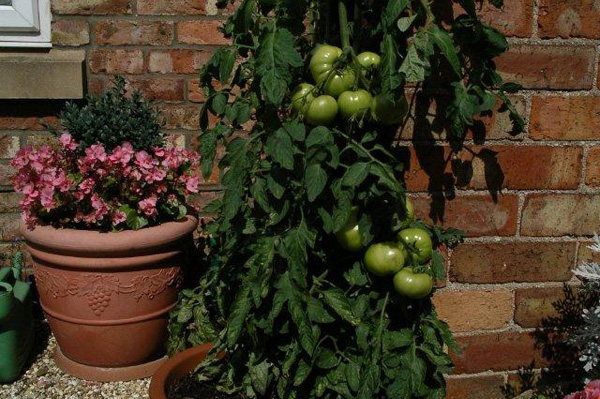This is a subject that has been touched on previously, but growing tomatoes in grow bags outside or in a greenhouse is definitely a subject worth revisiting.
There are obvious benefits to growing tomatoes in containers which include being able to avoid disease through the use of fresh uncontaminated compost, having the available nutrients available for your tomato plants through the selection of a suitable compost i.e. one which is nitrogen rich, and for those with space constraints or no garden at all, containers provide an option they might not otherwise have.
A favourite choice for many is the ever popular growbag, and for those that want to know how to grow tomatoes, this might just be a good starting point especially if this is your first tomato growing excursion. Considering the benefits above, two of the most important aspects of growing tomatoes are avoiding disease and having a ready supply of nutrients in a suitable soil; planting in containers takes care of these requirements nicely. Combine this with a decent amount of sunshine, around 6 hours a day, and a regular watering program and you are virtually there with respect to growing and caring for tomatoes.
Pots are the obvious alternative to growbags and are also a very viable option that take care of the same issues so shouldn’t be discounted. Just make sure the pot is large enough, a minimum 12″ diameter is recommended, and that it is clean before putting in your compost. A multi-purpose compost is a suitable option supplemented by a potash feed once you start to see the fruit developing.
A technique that is growing in popularity is to combine pots with growbags, certainly in the UK this is becoming common practice, particularly with the advent of special pots that can be inserted into the growbags to house the tomato plants and separate the 2 different root systems that the tomato plants have.
To explain this further, tomatoes have two types of roots, feed roots and water roots. The feed roots are near the top of the root ball and a little fibrous in nature where in contrast the water roots are white in colour and tend to be near the base of the root ball. These special pots, called ring culture pots, allow you to keep the feed roots segregated from the water roots in terms of where they located in the compost i.e. the water roots go down into the growbag, which now functions as a water reservoir, to access the water supply and the feed roots are in the central part of the pot where you can place a feed supplement, again a potash based one is good, so that the fruit ultimately gets the nutrients it needs in an undiluted form. Essentially this means that the fruit should be more flavoursome because the concentration of flavour is not diluted. I found this little tip in a Gardeners World video which also introduces another natty invention for use with growbags called a grow bag support frame.
This device sits under the growbag and has a support cane inserted through it into the compost to provide a very convenient way of ensuring your tomato plant is properly supported. The weight of the growbag holds the support in place and consequently the cane is also held rigidly requiring just a little soft string to tie the plant off as it grows.
Unfortunately it doesn’t appear as though either of these devices is available in the United States at the moment, but I am sure once the benefits are understood that situation should be quickly remedied.
These devices apart a growbag is still an excellent way to grow tomatoes but remember not to overcrowd the bag, a maximum of 3 plants per bag is the most you can put in and many will tell you to restrict that to two, so that you can be sure that the plants will thrive. Also when you lay the growbag down, give it a good shake to distribute the compost evenly and punch a few holes in the bottom side to ensure it can drain a little so it doesn’t become waterlogged. After that you will be well on the way to producing some great tasting tomatoes.


